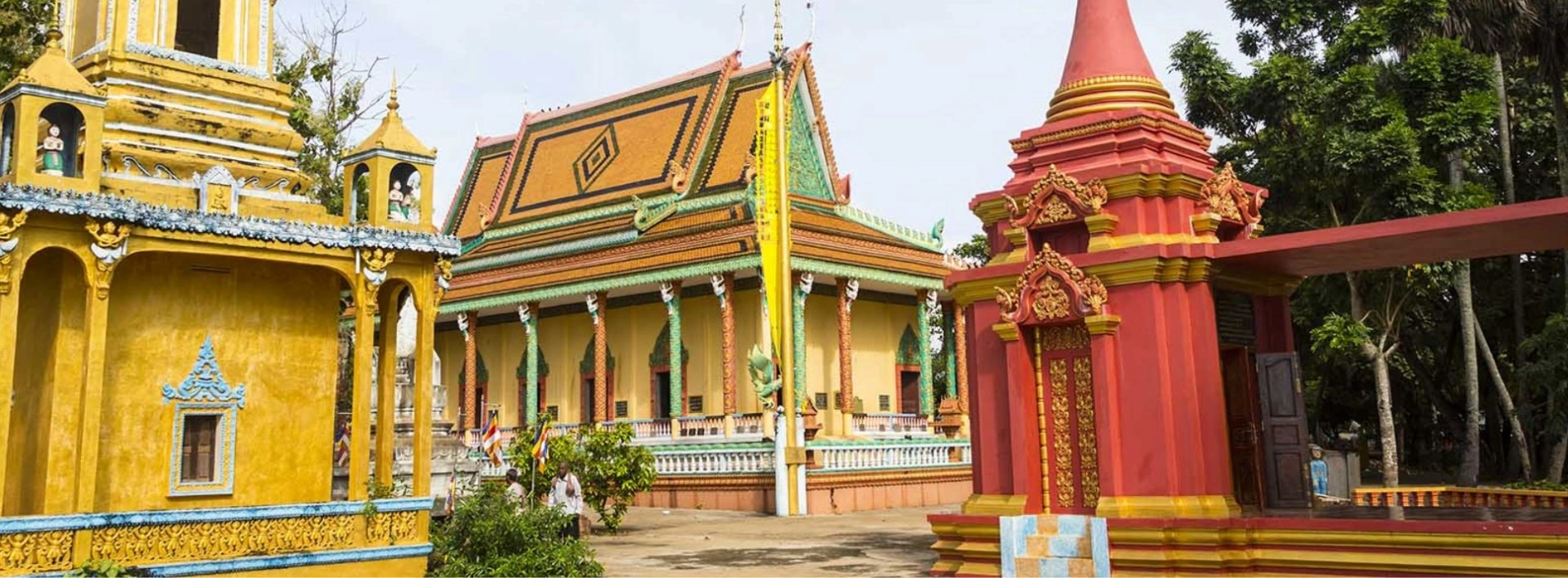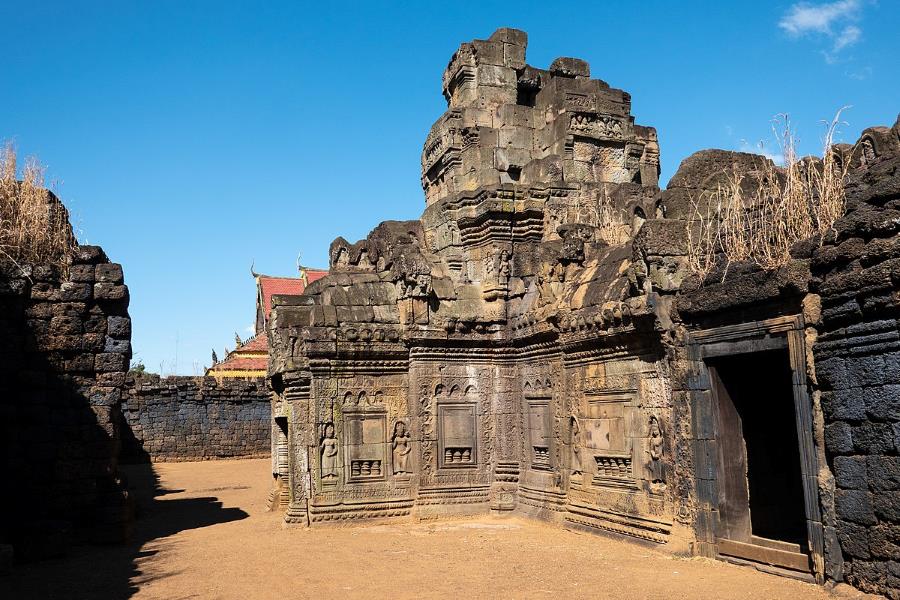Kampong Cham

Kampong Cham is one of the major cities in Cambodia, located in the east of the country. Anyone who has visited Kampong Cham is likely drawn there for one reason: the legendary Mekong River that runs alongside it.
Named after the Cham ethnic group in the area, Kampong Cham is home to most of Cambodia’s Muslim population and feels quite different from the rest of the country.
.jpg)
Kampong Cham is one of the major cities in Cambodia (Cre: Pinterest)
The name "Kampong Cham" means "Cham port," reflecting the deep connection of this land to the ancient Champa civilization. Before the Khmers arrived, the area was part of the Champa Kingdom. The remaining Champa ruins in Kampong Cham are a testament to the prosperity of this civilization.
After its decline, the Champa Kingdom was gradually annexed by the Khmers. The province became part of the powerful Khmer Empire, with temples and pagodas built in the Angkorian style.
Like many other regions in Indochina, Kampong Cham also experienced French colonialism. The French left their mark on the architecture and culture here. This land, influenced by many civilizations, offers a diverse lifestyle and architecture that is interesting to tourists.
.jpg)
Kampong Cham also experienced French colonialism (Cre: wander-lush)
Read more: Cambodia tours 5 days
The province borders Kampong Chhnang Province to the west, Kampong Thom and Kratie to the north, Tbong Khmum to the east, Kandal and Prey Veng to the south. The provincial capital is Kampong Cham City. Previously, the province shared a border with Vietnam.
After December 31, 2013, Kampong Cham Province was split into two provinces: Kampong Cham to the west and Tbong Khmum to the east. With a favorable geographical location on the Mekong River, Kampong Cham is a trading place for many countries in the region and is easy for tourists to explore.

The provincial capital is Kampong Cham City (Cre: Cambodia Firms)
The city is located about 124 km northeast of Phnom Penh and can be reached by boat or road. You can also use cars and buses to get to Kampong Cham. The drawback is that there are no direct flights to this province, so if you fly, you will need to use another means of transport to reach Kampong Cham.

You can also use many means of transport to get to Kampong Cham (Cre: kimkim)
Nowadays, ecotourism and exploration of handicraft villages provide income for many villagers and an enjoyable experience for tourists. Visitors can participate in various village activities, including rice cultivation and silk scarf making. A local tour guide will take visitors around the temples of Kampong Cham and nearby communities, where they can see typical countryside activities.
Cheung Kok is a self-sufficient village supported by the NGO Amica, which helps promote and manage income. All villagers involved in the project benefit directly, improving their living conditions and allowing them to spend more time at home with their families. It has also become a popular tourist attraction.

Cheung Kok is a self-sufficient village supported by the NGO Amica (Cre: Impacts Explorer Cambodia)
On the edge of town is Wat Nokor, part of the ancient Banteay Prey Nokor temple complex. This site is believed to have served as King Jayavarman VII's headquarters for a long time, helping him exert influence over local areas.
Unlike many other temple complexes in Cambodia, which are often built of brick or red sandstone, Wat Nokor is made of black sandstone. The temple's central tower depicts several scenes from Buddhist teachings. This is an impressive destination for visitors to this province.

On the edge of town is Wat Nokor, part of the ancient Banteay Prey Nokor temple complex (Cre: wikipedia)
Phnom Srey and Phnom Pros are the names of mountain peaks in a range that rises over 500 meters to the left. The northern part of Kampong Cham’s Phnom Srey and Phnom Pros is surrounded by the spectacular Dang Rek, Ba Ley, and Chhuk mountains. Visitors will find a high temple and two pagodas located on Phnom Srey and Phnom Pros.
There are temples, statues, and pagodas, along with many local legends associated with these hills, including stories of men and women that inspired their names. These hills also offer stunning views.

Phnom Srey and Phnom Pros are the names of mountain peaks in a range (Cre: Mekong Princess)
As a Southeast Asian country located in the Mekong River, Kampong in Cambodia usually has 2 seasons: dry season and rainy season. Rain has left Kampong fertile alluvial land, undulating on both sides of the Mekong River and arid grasslands have been given water, becoming vibrant wetlands. The dry season will be convenient for interesting outdoor experiences for visitors.

The dry season will be convenient for interesting outdoor experiences for visitors (Cre: wander lush)
There are several weaving villages in Kampong Cham Province, including areas around the city. The handicrafts produced by the locals include traditional Cambodian krama, scarves, and bandanas for decoration. The region is also famous for silk, so many of the clothes made here are crafted from locally produced silk.
Today, many villages are being planned and developed into tourist destinations to welcome visitors and showcase local culture. This helps boost the economy and promote traditional products to a wider range of everyone.

The handicrafts produced by the locals (Cre: wander lush)
Restaurants in Kampong Cham close quite early, so plan ahead and find a good place to eat before 8 pm. Both Cambodia and Western food are available, but be sure to try traditional Cambodian dishes for a great experience during your trip.
The biggest festival here is Khmer New Year, which usually takes place in April and lasts for three days. Shops are usually closed during this time, but there is plenty of merriment on the streets. There is also the Mekong River Festival, which is held in many towns along the Mekong River each year, and Kampong Cham is one of the places where this festival sometimes takes place. The festival features a gala dinner, sports activities, and many riverside celebrations in honor of the river.

Try traditional Cambodian dishes for a great experience on your trip (Cre: VICE)
With its welcoming locals, great restaurants, architecturally stunning temples and some fascinating traditional villages, Kampong Cham is a destination that will leave you completely satisfied. Plan your trip to experience this province for a memorable experience!
Read more: Cambodia tours 7 days